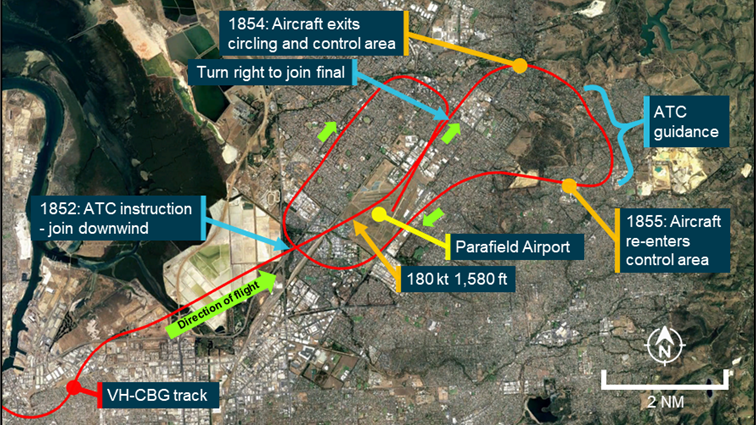
A Beechcraft Baron descended below minimum safe altitude during a night visual approach to Parafield Airport when the pilot lost situational awareness, an Australian Transport Safety Bureau investigation has found.
The Baron was conducting a charter flight under instrument flight rules (IFR) from Ceduna, on the west coast of South Australia’s Eyre Peninsula, to Parafield, in Adelaide’s north, on the evening of 13 May 2021. The pilot and a single passenger were on board.
During the flight, the pilot observed the aircraft’s tracking was ‘snaking left to right’ when the autopilot was engaged. The autopilot also did not turn the aircraft as rapidly as the pilot expected on a left turn towards Parafield.
Shortly after the pilot completed that turn manually and re-engaged the autopilot, Parafield air traffic control cleared the Baron for a night visual approach, and the aircraft descended towards the airport.
“At this time, the pilot’s focus was on the autopilot, resulting in the pilot losing sight of the runway and inadvertedly overflying the airport, towards an area of rising terrain at an altitude well below the minimum safe altitude,” ATSB Director Transport Safety Stuart Macleod explained.
“The pilot maintained this low altitude and continued the approach while looking for the runway.”
Despite being at night, there was enough light for the Parafield tower controller to see the aircraft and the hill-line to the east, so its terrain clearance did not raise concerns.
After losing sight of the runway, the pilot maintained a stable aircraft attitude and altitude as they could see the artificial street lighting on the ground, and had good visibility ahead and below the aircraft. They were also generally familiar with Parafield Airport.
However, the pilot had lost sight of the airport at night when the ability to visually identify obstacles was limited, so the safest option was to initiate a go-around and climb to the minimum safe altitude.
The aircraft was outside the airport’s circling and control area for about a minute, before the pilot was able to re-enter the control area under air traffic control guidance, and join the upwind leg of the circuit. The aircraft subsequently landed safely. No defect with the aircraft’s autopilot system was identified after the flight.
The ATSB’s investigation into the incident found that the pilot lost situational awareness, probably as a result of distraction due to the perceived autopilot issue.
“This incident highlights that unless there is a problem affecting flight safety, pilots should remain focused on monitoring aircraft and approach parameters, which provides assurance that an approach can be safely completed,” Mr Macleod said.
“If a visual approach cannot be completed pilots must inform air traffic control so assistance can be provided.
“If the criteria for the safe continuation of an approach are not met – for example losing sight of the runway – pilots must initiate a go-around and maintain a safe altitude to reduce the risk of colliding with obstacles or terrain.”
Since this incident, the aircraft’s operator, Hartwig Air, has updated its training program to include a threat and error management course.
Additionally, Airservices Australia has advised that it will brief its Parafield Airport tower controllers on the incident, including information on the circling area, descent below the minimum safe altitude during visual approaches, go-arounds, and the ‘safety alert’ procedure.
This procedure is intended to warn pilots that their aircraft is in unsafe proximity to terrain, obstruction, active restricted/prohibited areas, or other aircraft.
Read the report: Flight below the minimum safe altitude involving Beechcraft Baron 95-B55, VH-CBG, 5 km north-east of Parafield Airport, South Australia, on 13 May 2021


